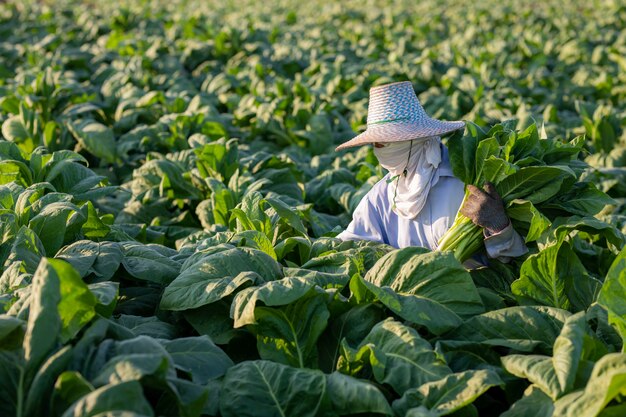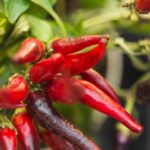Tobacco farming in South Africa can be a profitable endeavor if done correctly. Tobacco requires careful management, the right inputs, and attention to detail at every growth stage, from seed to harvest and storage. This article provides South African farmers with a comprehensive guide to tobacco cultivation, covering each growth stage, inputs required, soil conditions, pest control, and land preparation.
1. Land Preparation
Proper land preparation is the foundation of a successful tobacco crop. Tobacco grows best in well-drained, sandy-loam soils with a pH of 5.5 to 6.5. Farmers should test their soil to determine its pH and nutrient levels, applying lime if necessary to adjust acidity.
Steps:
- Plowing and Tilling: The land should be plowed to a depth of 30–40 cm to loosen the soil and improve drainage. Follow this with tilling to break up clods and create a fine seedbed.
- Soil Amendments: Organic matter, such as compost or manure, can be added to improve soil fertility. Inorganic fertilizers may also be necessary, based on soil tests.
Fertilizers:
- Nitrogen (N): Required for leaf growth, but too much can reduce leaf quality.
- Phosphorus (P): Needed for root development.
- Potassium (K): Vital for leaf quality and disease resistance.
A common fertilizer mix for tobacco is a 10-10-10 NPK formulation, applied at a rate of 1,000–1,500 kg/ha.
2. Seed Selection and Sowing
Tobacco is typically grown from seeds in a nursery and then transplanted into the field.
Steps:
- Nursery Preparation: Tobacco seeds are extremely small and require a fine, loose growing medium. A mixture of sand, soil, and compost works well.
- Seed Sowing: Sow seeds in trays or directly in the nursery bed. They should be lightly covered with soil and kept moist.
- Transplanting: After 8–10 weeks, when the seedlings reach about 10–15 cm in height and have 4–6 leaves, they are ready for transplanting into the field.
3. Transplanting and Field Care
Transplanting should occur early in the growing season, ideally after the last frost. Tobacco plants should be spaced about 50 cm apart, with rows spaced 100 cm apart to allow for adequate airflow and prevent diseases.
Inputs Required:
- Water: Tobacco requires consistent moisture, particularly in the early stages. Farmers should aim for 25–30 mm of water per week, depending on weather conditions. Irrigation may be necessary in drier regions.
- Fertilizer: Additional fertilizer applications may be required during the growth phase, particularly nitrogen, but care should be taken not to over-fertilize, as this can affect leaf quality.
4. Growth Stages
Tobacco grows through several stages, and each requires specific care:
- Vegetative Stage (Weeks 1-6): During this period, the plant focuses on leaf development. Keep the soil consistently moist and apply fertilizer as needed.
- Flowering Stage (Weeks 7-9): Remove flower buds (“topping”) to encourage more leaf production and prevent the plant from using energy to produce seeds.
- Leaf Maturity Stage (Weeks 10-14): The leaves will grow larger and begin to yellow as they mature. This stage is critical for producing high-quality tobacco.
5. Pest and Disease Management
Tobacco is susceptible to several pests and diseases that can significantly affect yield and quality.
Common Pests:
- Aphids: These small insects can damage leaves by sucking plant sap. Insecticides such as imidacloprid or neem oil can be applied when aphids are detected.
- Tobacco Hornworm: This caterpillar can destroy leaves. Handpicking or applying Bacillus thuringiensis (Bt) can help control this pest.
- Cutworms: These soil-dwelling pests attack seedlings. Applying insecticides before transplanting can help prevent infestations.
Common Diseases:
- Black Shank: A soil-borne fungal disease that causes wilting and root rot. Crop rotation and the use of resistant varieties can help control it.
- Blue Mold: A fungal disease that causes lesions on leaves. Preventive fungicide applications may be necessary in humid conditions.
- Tobacco Mosaic Virus (TMV): This virus causes mottled leaves and reduced growth. It is spread by contaminated tools, so sanitation and hygiene are essential.
Pesticide and Herbicide Use:
- Insecticides: Should be used as soon as pest infestations are detected. Always follow the manufacturer’s guidelines for application rates and safety.
- Herbicides: Tobacco fields should be kept free of weeds, especially in the early stages. Herbicides like glyphosate or metolachlor can be applied pre-planting or after transplanting.
6. Irrigation and Water Management
Tobacco plants require regular water, especially in drier areas of South Africa. Drip irrigation is the most efficient method, providing water directly to the root zone and reducing evaporation losses.
Watering Frequency:
- During the early growth stage, water plants frequently to establish roots.
- Reduce watering as the plant matures to prevent waterlogging, which can lead to root diseases.
7. Harvesting
Tobacco is ready for harvest when the lower leaves begin to yellow. Harvesting can be done in stages, starting with the lower leaves and moving upwards as the leaves mature.
Steps:
- Priming: Pick the lower leaves first, as they ripen earlier.
- Curing: After harvest, tobacco leaves must be cured to reduce moisture content and develop flavor. This can be done using air curing (drying in barns) or flue curing (using heat). In South Africa, flue curing is common, especially for Virginia tobacco.
8. Post-Harvest Handling and Storage
After curing, tobacco leaves should be graded and packed for storage or sale.
Storage Tips:
- Store leaves in a dry, well-ventilated area to prevent mold.
- Keep humidity levels low to avoid spoilage.
- Tobacco can be stored for several months to allow flavors to develop.
Growing tobacco in South Africa requires careful management, from land preparation to pest control and harvest. Farmers must ensure they use the right soil, provide adequate water, and apply fertilizers at the appropriate stages to produce high-quality leaves. Regular monitoring of the crop for pests and diseases is also critical, along with proper harvesting and curing techniques. By following these guidelines, South African farmers can achieve successful tobacco yields and maximize profitability in this highly specialized crop.








